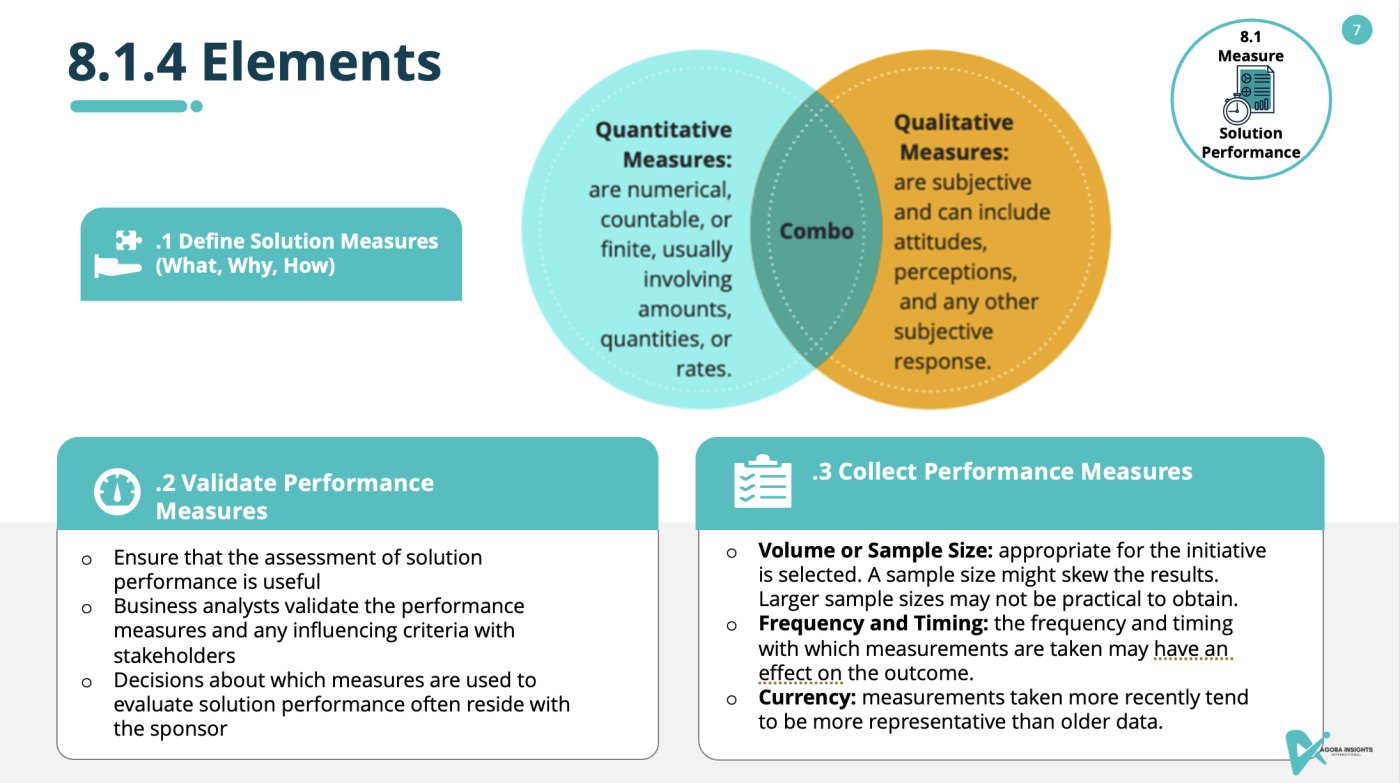Business analysts rely on estimation to give an overall view of a project's potential cost, effort, and outcomes. To estimate the value of things, business analysts use estimation techniques to gauge the value of different solutions and approaches in order to make decisions that are most likely to bring successful business results. Estimation is essential for gaining insights into what course of action would be best pursued. In Part 9 of The Knowledge Brief we discuss why estimation is important, how to reason the information at hand, what a confidence interval is and estimations techniques. We have a lot to cover, so lets get started...
What is estimation and why is it important for business analysts
Estimation is a key component of business analysis and can help decision-makers determine the financial viability, potential outcomes, and alternative approaches for taking on projects. By using estimation techniques to measure value across different scenarios, analysts are able to make choices that lead toward successful results - ultimately aiding in sound planning with an eye towards positive returns. Estimation is used to help make decisions by predicting things like
- the cost and effort of a course of action,
- the expected benefits of a solution,
- the cost of a project,
- the performance of a business,
- the potential value of a solution,
- the costs of making a solution,
- the costs of running a solution, and
- the impact a risk could have.
Estimation is therefore a critical skill required for project success. Business analysts can accurately set important project expectations and identify any potential flaws by utilizing multiple estimation methods. Estimation is also used to assess resource needs, negotiate budgets, and manage trade-offs. When dealing with uncharted territory, business analysts require the insights that effective estimation can provide in order to determine the best possible future state for their organisation.
There are some places you can look to find out how long something will take or how much it will cost. Here are some examples:
- Analogous situations- Look at other projects that are similar to see how long they took.
- Organisational History - Look at what the organization has done in the past. This is most helpful if the organization did something similar before and if the same team did it before too.
- Expert Judgement - Ask people who know about the project and who have done similar work before. When you ask them, make sure to think about their skills and abilities so you get a good estimate.
How to use Different Ways of Reasoning
In this video by LiveScience the author uses simple examples to explain the different types of reasoning. Deciding on the type of reasoning you are doing when estimating, it can make a difference to the results of the project.

Deductive Reasoning
An example of deductive reasoning in business estimation is when an analyst uses logical thought and known premises to infer valid conclusions about future business states. For instance, a business analyst may begin with the premise that a project will require specific resources, such as personnel and equipment, as well as adequate time to complete. By considering these factors in light of the business objectives, business analysts can make a logical conclusion about the estimated costs and timeline of the project.
Inductive Reasoning
An example of inductive reasoning in business estimation is when an analyst analyzes past project data to determine the success rate of future projects. For example, after reviewing the data from multiple projects over the past year, an analyst can identify patterns and trends that suggest some types of projects are more successful than others. By investigating these patterns in detail and using inductive reasoning, business analysts can accurately estimate the success rate of future projects that are similar to these past projects.
Abductive Reasoning
Lastly, business analysts utilize abductive reasoning when faced with uncertainty or incomplete information within their estimations. Through this form of reasoning, business analysts can use creative thinking to identify the best possible explanation for any given situation and develop a plan of action accordingly. For example, business analysts may not have access to all the necessary data or information in order to make an accurate estimation. In this case, business analysts would need to use their intuition and creative thinking to come up with a plausible explanation for their estimation.

What is a Confidence Interval?
Sometimes the outcome of estimation is a number, for instance how much it would cost to build a house. However, because we don't know what the final value will be, it's often better to express the results of estimation as a range. This range includes a minimum value, a maximum value, and a probability. This range is referred to as a confidence interval. It demonstrates how uncertain the outcome is. The wider the confidence interval, the less information a business analyst has.
For example, if you are building a house and bring someone over to estimate the cost without a set of drawings, the person will most likely estimate your house build on a general rate per square metre and therefore you will have a low confidence interval. But as your requirements become more specific, you can then estimate your house build based on closer values. This is the point at which your confidence in the estimate increases to a higher level of accuracy.
In this video by Data Demystified, Jeff Galak discusses confidence intervals. He discusses what they are in an intuitive way, explains what influences their range, and shows you a quick demonstration with a bag of dice. He focuses on understanding the concept behind something complex and how the rest becomes much easier to learn from there.

How to estimate the value a project
Estimating the value of a project is essential for anyone who wants to ensure that they are making a wise investment. There are a number of techniques that can be used to determine the value of a project, and the most appropriate approach will often depend on the specific project in question. One common tool for estimating value is the feasibility study, which assesses the likelihood of success for a given project. Another important consideration is customer value, which looks at how much value the project will create for its intended audience. By taking these and other factors into account, it is possible to get a more accurate estimate of the true value of a project.
It is important to distinguish between qualitative and quantitative measures.
- Qualitative measures are those that are difficult to quantify, such as the opportunity cost of time spent on a project.
- Quantitative measures are more tangible, such as the cost of materials.
Once qualitative and quantitative costs have been identified, it is then possible to start estimating using a bottom-up approach. This involves breaking the project down into small tasks and estimating the cost of each one. It is also important to account for sunk costs, which are costs that have already been incurred and cannot be recovered. By taking all of these factors into account, it is possible to develop a clearer picture of the true cost of a project.
Tips for Estimation
When it comes to estimation, there are a few different approaches that you can take. Different ways of estimating are used in different situations. In each case, it's important for business analysts to agree on how to describe the parts that need to be estimated. This is often done with a work breakdown structure or another way to break up the work that needs to be estimated. When making an estimate and giving it to someone, constraints and assumptions also need to be made clear.
- Top-down: examining the components at a high level in a hierarchical breakdown.
- Bottom-up: using the lowest-level elements of a hierarchical breakdown to examine the work in detail and estimate the individual cost or effort, and then summing across all elements to provide an overall estimate.
- Parametric Estimation: use of a calibrated parametric model of the element attributes being estimated. It is important that the organization uses its own history to calibrate any parametric model, since the attribute values reflect the skills and abilities of both its staff and the processes used to do work.
- Rough Order of Magnitude (ROM): a high-level estimate, generally based on limited information, which may have a very wide confidence interval.
- Rolling Wave: repeated estimates throughout an initiative or project, providing detailed estimates for near-term activities (such as an iteration of the work) extrapolated for the remainder of the initiative or project.
- Delphi: uses a combination of expert judgment and history. There are several variations on this process, but they all include individual estimates, sharing the estimates with experts, and having several rounds of estimation until consensus is reached. An average of the three estimates is used.
- PERT: each component of the estimate is given three values: (1) Optimistic value, representing the best-case scenario, (2) Pessimistic value, representing the worst-case scenario, (3) Most Likely value. Then a PERT value for each estimated component is computed as a weighted average: (Optimistic + Pessimistic + (4 times Most Likely))/6.
Whichever approach you choose, there are a few tools that can help you arrive at an accurate estimate. First, make sure to measure the relevant data points. Second, use established benchmarks to compare your data points to. And finally, use a trial-and-error approach to fine-tune your estimate. By following these tips, you can improve your estimation accuracy and become more confident in your ability to predict future outcomes.
Conclusion
In business, estimation is key to project success. Whether you are trying to ascertain the value of a project or estimating the cost and impact on stakeholders, estimation is essential for good decision-making. We’ve looked at what estimation is and how to go about it accurately. Have you tried any of these techniques in your role as a business analyst? If not, why not give them a try? You may be surprised at how helpful they can be in making sound decisions for your organisation.
Happy learning
Post sponsored by Agora Insights Ltd




Post a Comment